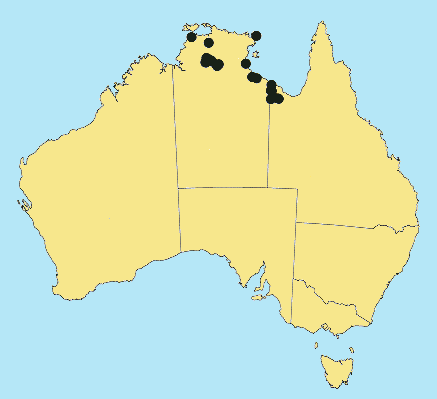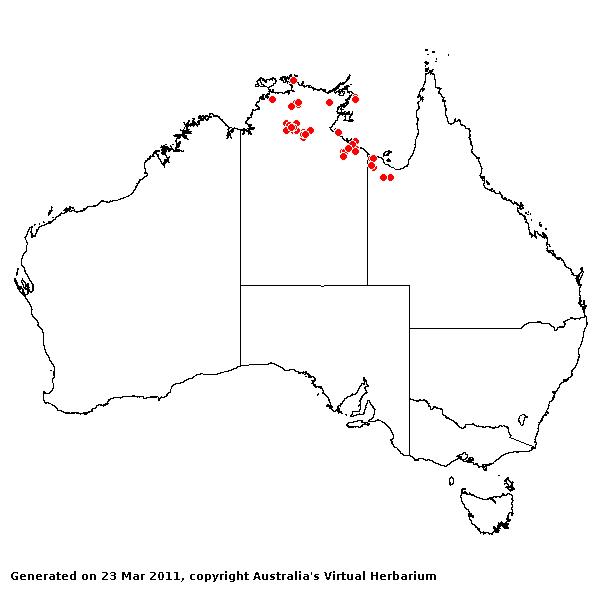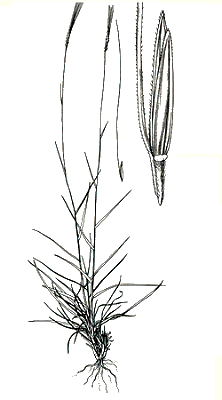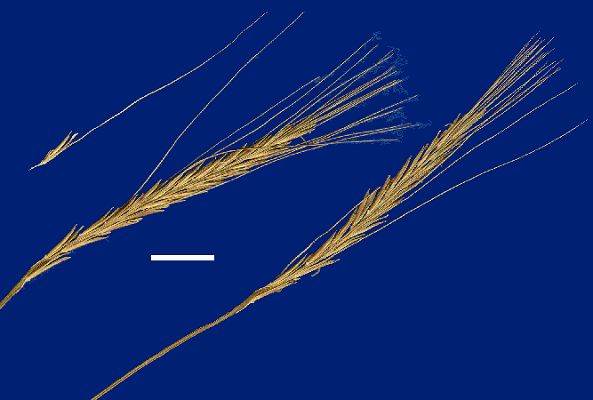Chamaeraphis hordeacea R. Br. Prodr. 193
(1810.
Classification. (GPWG 2001) : Subfamily
Panicoideae. Paniceae.
Type of Basionym or
Protologue Information: T: R. Brown 8059, Australia ((fragm.,
US-865695)).
Key references
(books and floras): [1810]. R.Brown, Prodromus (194), [1878]
G.Bentham, Flora Australiensis 7 (499 as Chamaerhaphis), [2002]
D.Sharp & B.K.Simon, AusGrass, Grasses of Australia.
Habit.
Perennial. Culms 25–60 cm tall. Ligule a fringed membrane, a ciliolate
membrane, 0.8–1.2 mm long. Leaf-blades 3–10 cm long, 2–5 mm wide. Leaf-blade
surface scabrous.
Inflorescence.
Inflorescence solid, a raceme. Racemes numerous, 20–60 cm long. Central
inflorescence axis 3–5.5 cm long. Rhachis deciduous from axis.
Spikelets.
Spikelets sessile. Fertile spikelets 2-flowered, the lower floret barren
(rarely male), the upper fertile, comprising 1 basal sterile florets,
comprising 1 fertile floret(s), without rachilla extension, linear, dorsally
compressed, 6–8.2 mm long.
Glumes. Upper
glume linear, 6–8.2 mm long, coriaceous, keeled, 2-keeled, 7 -nerved. Upper
glume surface glabrous. Florets. Basal sterile florets 1, male, with
palea. Lemma of lower sterile floret 100 % of length of spikelet, coriaceous,
7–9(–11) -nerved.
Fertile
lemma 3.3–6 mm long, without keel, 3 -nerved. Lemma surface glabrous. Palea
without keels.
Continental
Distribution: Australasia.
Australian
Distribution: Northern Territory, Queensland.
Northern Territory:
Darwin & Gulf, Barkly Tableland. Queensland: Burke.
Notes. In
tropical and subtropical sub-humid woodlands and coastal grasslands. Flowers
Feb.-July.




